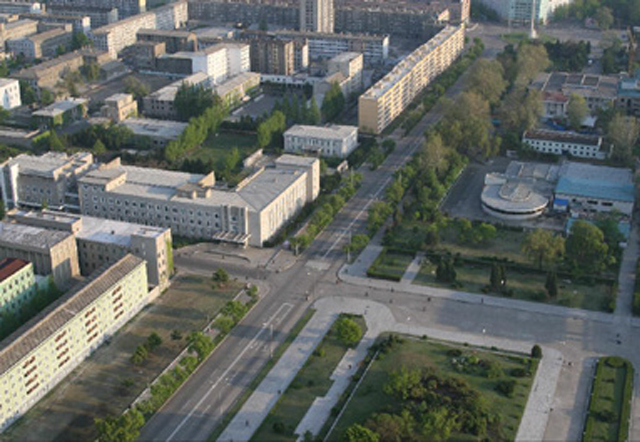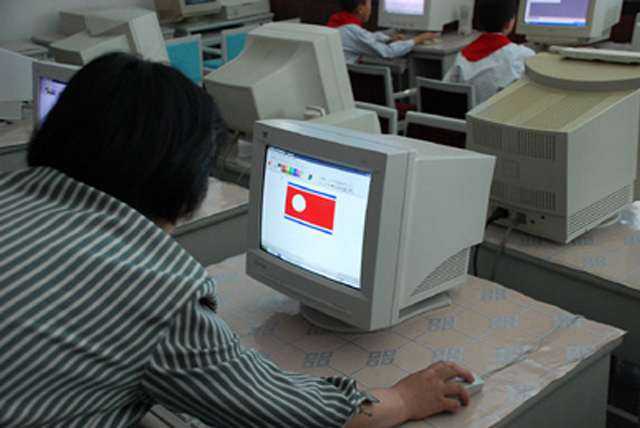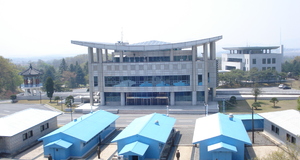From Cornell International Affairs Review VOL. 5 NO. 1Information Technology and Control in the DPRKIn the Hermit Kingdom, information is a crucial resource. Its possession represents access to resource and weapons development techniques, but more importantly, information is what separates North Korean society from the rest of the world. Since the state’s inception, meager rations of information combined with hearty doses of propaganda have kept the populace starved with respect to knowledge of the rest of the world’s progress, which has quickly surpassed their own in the past two decades. Why, then, has the current regime dared implement 21st century communications systems such as internet technology if such a move would increase the possibility of an information risk? I argue that Supreme Leader Kim Jong Il’s regime encouraged the implementation of such systems because the technology had been adapted with restrictions judged sufficient to minimize their security risk. Through tracing their implementation in comparison with that of other technologies such as radios and weapons technology, it can be seen that communications systems were given the same treatment as these other potentially societychanging technologies: tailored so specifically to North Korean purposes in accordance with Juche doctrine that their use for any other was thought impossible. However, we can see from examining recent information leaks from within North Korea that these controls may not be as watertight as hoped by their implementors. In the Western world, where information exchange is a profitable and fast-growing area of the economy, the idea of opposing connectivity is unthinkable. However, in North Korea’s case, the question of whether or not to implement information technology, and how to do so, is an important one. To overlook this question is to miss a key opportunity to analyze the highly reclusive state’s methods of operation, as well as its current views toward an interconnected world of which it does not participate. Though most news sources have sparingly documented North Korea’s recent quiet moves toward implementing internet access, academic analysis of why this technology is being implemented in the first place is limited. One school of thought on North Korea’s steps toward net access proposes that the regime uses extremely limited IT implementation to enforce its control of the population. A CIA study from 2007 entitled “Hermit Surfers of P’yongyang: North Korea and the Internet” argues that the internet actually “serves as a pillar supporting Asia’s most authoritarian government.”1 The main argument behind this claim is that researchers working abroad or in a few tightly monitored facilities within North Korea access the Internet and essentially strip-mine it for foreign technical information posted there, downloading the information, scourging it of any politically dangerous content, and then sending this data to research facilities, which are responsible for domestic research and development. Before the rise of internet technology, the North had to network, in however limited or parasitic a fashion, with other nations in order to make any scientific progress – as was the case with the USSR and China. Now, however, a single researcher with an internet connection can harvest “vast amounts of information with an ease unimaginable ten years ago.”2 In the view of this study’s authors, this method of onesided scientific exchange is much safer for the regime, because it allows the acquisition of information with no dangerous discourse, and the scientists to whom the information eventually makes its way get no exposure to the original ideological contexts of these ideas. In all other sectors of society, the report maintains, there is no access to information technology. Since this study, information has arisen suggesting that North Korea recently has been investigating IT possibilities beyond simple data harvesting and the personal enjoyment of key leaders. In 2003, Kim Jong Il Identified three types of fools in the 21st Century: people who do not appreciate music, people who smoke, and people who cannot use the computer.3 In the same year, North Korea’s Kwang Myong intranet went live. Just like the internet accessible to the rest of the world, Kwang Myong, meaning “light,” has e-mail and access to various internet sites and is available to at least the more affluent of Pyongyang’s inhabitants.4 Critically, Kwang Myong is an intranet, rather than constituting part of the Internet, meaning its computers are connected only to each other, and the network is inaccessible from the outside. Despite these limitations, Kwang Myong represents a big step toward connectivity in the North. In the same year, on the Internet, North Korea launched its own official website, uriminzokkiri.com, hosted on a server in Shenyang, China as if to showcase these advances to the world.5 This website made headlines in 2010 when it opened a Twitter and YouTube account. In 2004, there was a step back in communications technology when cell phones were outlawed. This law mainly affected visiting diplomats, because mobile phone use within the country was limited to only the highest officials. However, after years of effort by the Egyptian communications company Orascom, Koryolink, a North Korean-exclusive cell phone network, was launched in 2008. The government registration fee of $1,000 USD, which had to be paid in foreign currency, served automatically to limit the possession of cell phones to government elites at first, but since 2009, the first year of Koryolink’s operation, the number of subscribers has jumped from 69,261 to 450,000 as of April 2011, proving that the consumption of cell phones has broadened widely from society’s elite.6 Cell phone use is still almost exclusively limited to the Pyongyang and Nanpo wealthy, but the fact that this network exists is a large change from years prior. Since these policy changes, North Korean presence on the Internet has increased quietly. As of March 2011, there are twelve websites whose servers are located in North Korea and another 18 run by the regime remotely from servers in China and Japan.7 Most recently, and most surprising to observers of North Korea, however, was the long-postponed opening of the Pyongyang University of Science and Technology in October 2010. Pioneered by American evangelical scholars, the university offers a state of the art campus and curriculum to its hand-picked 160 students, including access to the web. This access is censored, but it is real, and thus unprecedented outside Kim’s closest circle. Thus, it can be said with certainty that North Korea has been increasing web access – albeit slowly and cautiously - since the turn of the millennium. But the question remains: why? Why permit this access in a country where even radio stations and televisions remain tuned to official state channels, and where any communication with the outside world is strictly forbidden and treated as a severely punishable security breach? In contrast to other, older analyses, I maintain that it is in the restrictions in the utilization of the new products and services, and not the introduction of the technology per se, that the answer to North Korea’s technological ascendancy lies. Re-examining these areas of development, there is a common thread of restriction and monitoring. I find that the DPRK regime permits and continues the implementation of these IT goods and services because it believes it has implemented restrictions on their use adequate to minimize any security risk. The guidelines for these restrictions can be found in the Juche philosophy of selfsufficiency. Unlike the Internet, the Kwang Myong intranet links only computers within North Korea. Users have email, but on this intranet they can only email other domestic users, while people on the Internet abroad cannot send messages to the Kwang Myong system. By the same token, the internet pages accessible through Kwang Myong are screened and, once approved, downloaded from the real internet by regime agents working overseas. Thus, the system is a limited simulacrum of the world net. In the same way, Koryolink cell phones can only call other phones on the Koryolink network. There is no international calling, and data accessible from these phones is an offshoot of Kwang Myong. Additionally, anyone who wants to carry a cell phone must pass a rigorous registration and screening process, and is then subject to government eavesdropping and censorship at all times. Again, this cell network is not linked to that of the rest of the world, but is rather a restricted facsimile. The system is automatically selfdefensive, as censorship and oversight are common. In these respects, North Korean IT policy developments to date do splendidly embody the Party’s idea of Juche in all fields. Other homegrown copies of outside world tech favorites are also becoming more common. The code that runs the popular Firefox browser has been re-appropriated by the DPRK for their own national browser system. The code and functions are the same, and the original Firefox logo makes an appearance on several of the browser’s feature pages, but the product has been rebranded as “Naenara,” or “Our Country.” This browser features prominently in “Red Star OS,” North Korea’s recently-released Linux-based operating system. Details about the OS are limited to screenshots and descriptions posted online by a Russian blogger studying in Pyongyang,8 but it has emerged that the operating system plays a patriotic anthem at startup and contains copies of popular programs such as Microsoft Office and games.9 Essentially, internet technology was a new resource treated with old caution. Juche philosophy, in its most practicable interpretation, mandates self-reliance. In terms of resources, this doctrine is manifested as a refiguring of resources to be Korean-produced and Korean-used: creating a closed loop. This closure is, of course, antithetical to the internet as the rest of the world knows and uses it, but for North Korea, which viewed the net primarily as a database and secondarily as a method of exchange, this problem was easily solved. In IT terms, Kwang Myong is the definition of a closed-loop system. These first steps towards net connectivity have not resulted in widespread economic success, but they indicate that the leaders no longer are naysaying any internet access due to political fears. More recently, the door has been cracked open wider, most significantly with the recent opening of Pyongyang University of Science and Technology (PUST). This important event represents, for the first time, the opening of a direct link to the world internet (the real one, not Kwang Myong) that, however restricted, is in the hands of the nation’s best and brightest. A triumph for negotiators from the US, China, and South, Korea, the university, now in its second year of classes, enrolls students from North and South, and brings together faculty from all the nations named above. For the first time, Kim Jong Il has allowed a hand-picked academic elite to step outside the tight walls of Juche facsimiles in hopes that, with their education, they will help North Korean adaptation to the 21st century’s new technologies. To what extent these adaptations will extend beyond the elite, and what the effects of this early exposure will be, it is simply too early to say. Even ten years ago, most North Koreans had never seen, let alone interacted with, a computer. That said, there is a genuine possibility that these cracks in North Korea’s information block may fracture and widen, opening the way for a distant but possible flood of information. The possibility that even current IT levels pose a risk to the regime arises from from data on consumer trends and recent events where communications technology was used explicitly against the regime. The first consequence of IT implementation, even at its current limited extent, that represents a risk for the North Korean government is the simple familiarity with technology that comes as a natural consequence of exposure. Even ten years ago, most North Koreans had never seen, let alone interacted with, a computer. Now, with Chinese-made computers being sold to the wealthy in Pyongyang, most citizens of the Worker’s Paradise have some idea of the machines and their capabilities. Computer education is becoming a key part of North Korean schooling, and those students with exceptional promise have an opportunity to study further at “Computer Genius Training Centers.”10 Graduates of these centers may be sent to work in the research sector, or in development of products like Red Star OS that will in turn increase exposure to the internet within North Korean society Even on a limited scale, computers have become a non-trivial part of North Korea’s economy, a step up from ten years ago, when they were merely a personal plaything of Kim Jong Il. In 2006, “Silver Star 2006,” a computer game made in North Korea, went on sale in the South,11 while in 2005 a South Korean company released the film Empress Chung, co-animated by a team in the North.12 Diplomats even report that more and more business cards – not just Kim Jong Il’s, as in 2000 – carry email addresses, meaning there is a real link to communications technology to the outside world maintained somewhere within the DPRK’s murky industrial sector.13 On a basic level, North Korean society is becoming more and more familiar with computer technology. The first North Korean internet café (connected to Kwang Myong, not the real web) opened in Pyongyang in 2002, and others have opened since, some even outside the capital.14 They boast computer games popular with children, access to email, and even online dating.15 All the computers in these cafés perhaps predictably open to the North Korean government homepage, where old propaganda takes a new digital form.16Continued on Next Page » Suggested Reading from Inquiries Journal
Inquiries Journal provides undergraduate and graduate students around the world a platform for the wide dissemination of academic work over a range of core disciplines. Representing the work of students from hundreds of institutions around the globe, Inquiries Journal's large database of academic articles is completely free. Learn more | Blog | Submit Latest in International Affairs |




















